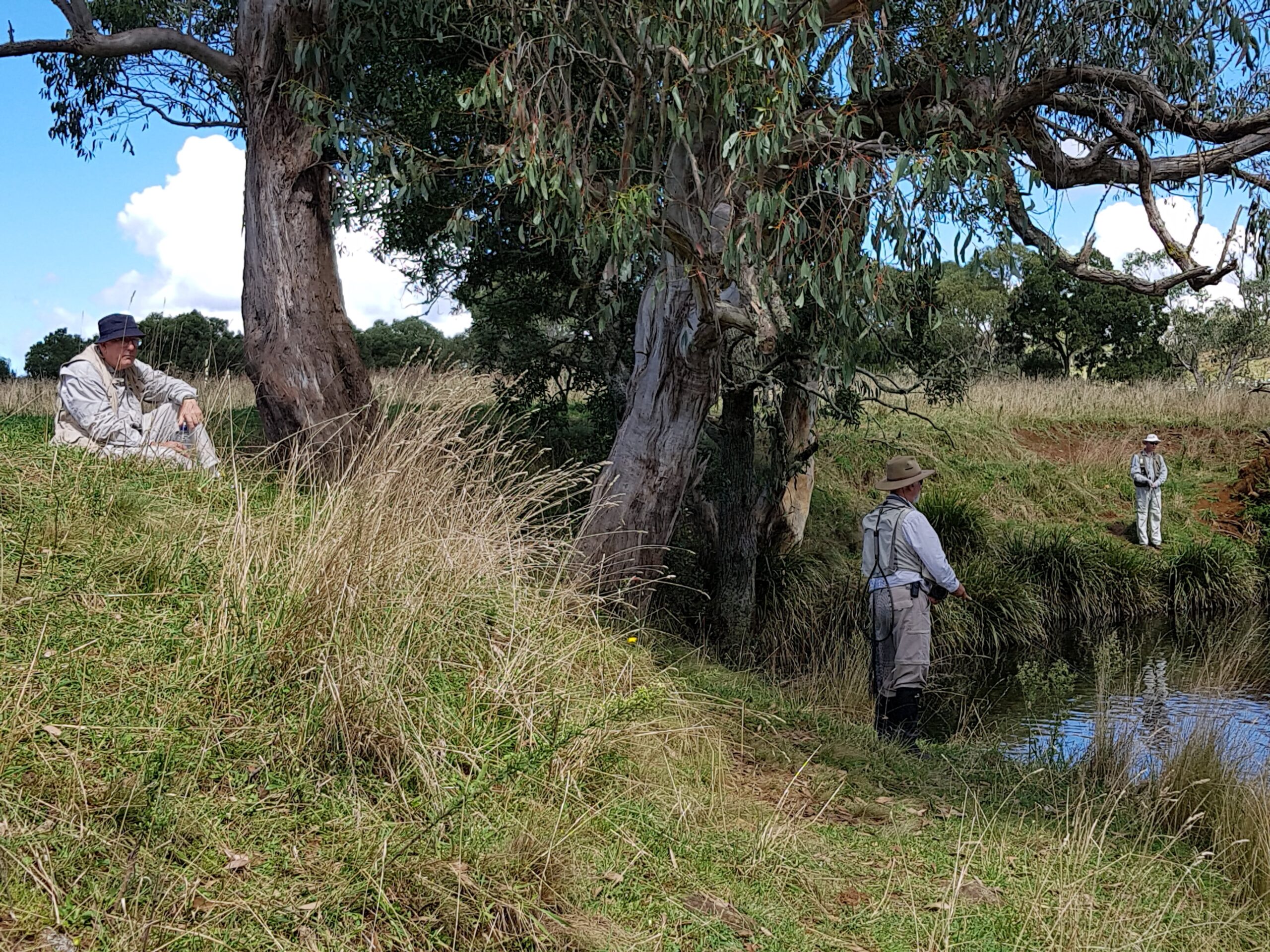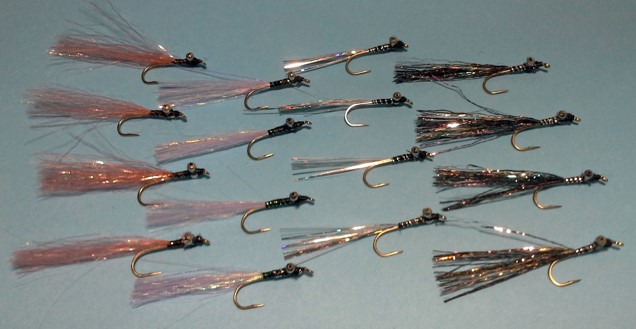The Termite Fly
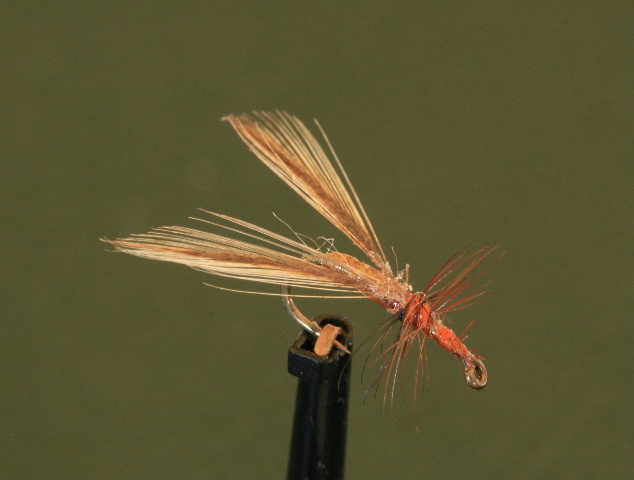
The late Warryn Germon really had termites worked out; well as far as the trout were concerned. He developed three very effective patterns that worked not only here in Australia but America as well.
- Hook: Mustad R50, size 18-16
- Body: Orange thread built ant shape with cream thread over to give the effect of translucency
- Wings: Cream Badger cock hackle tips taken from an old Indian cape. The wings are tied in with the wings facing out over the eye of the hook and then folded back over the body to secure
- Hackle: Brown Whiting Farms cock saddle hackle at least three turns
- Head: Orange thread.
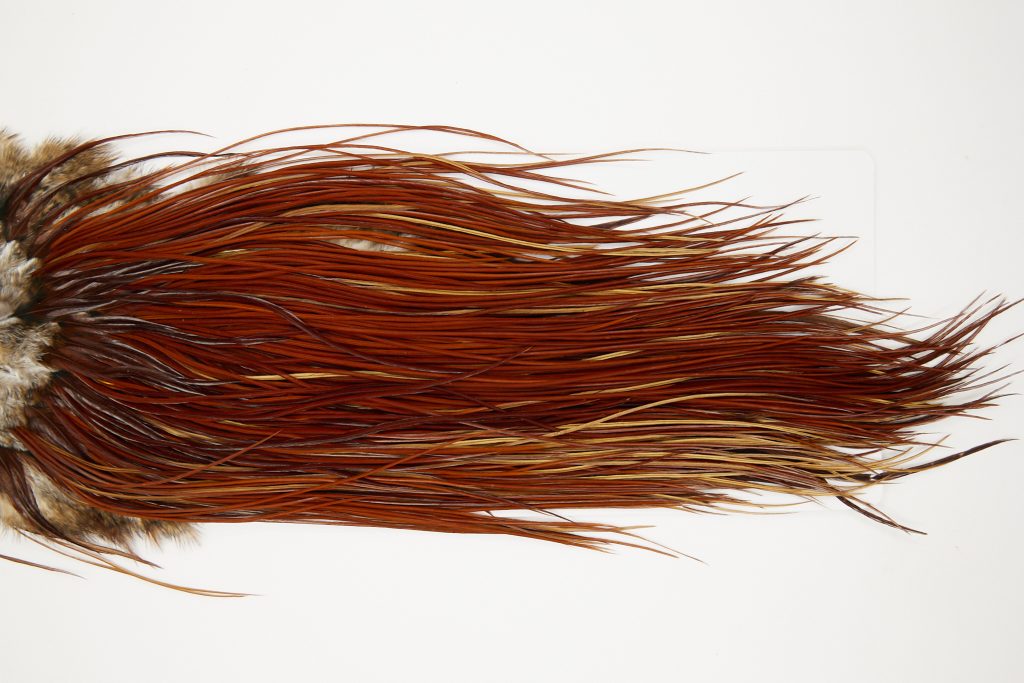
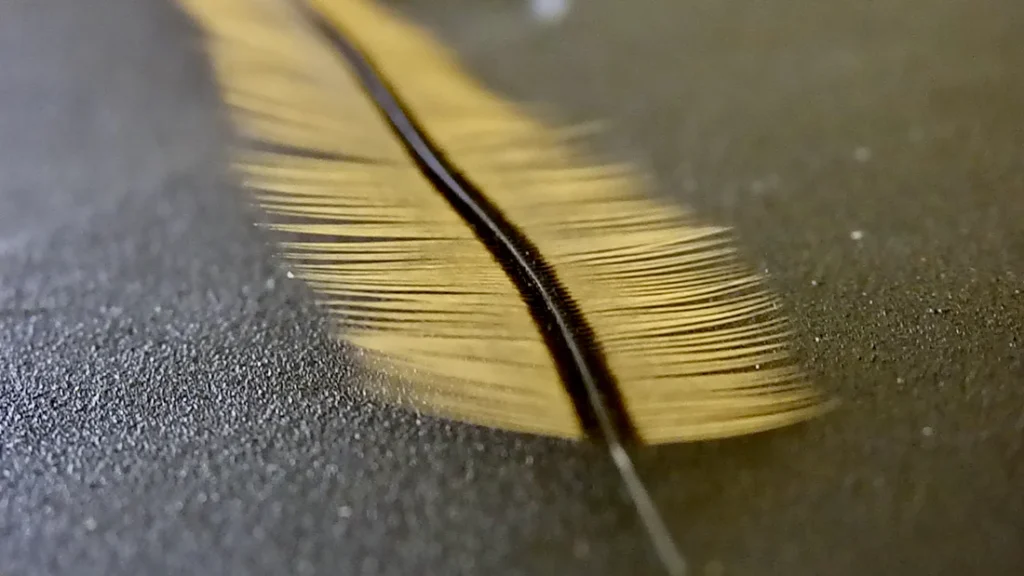
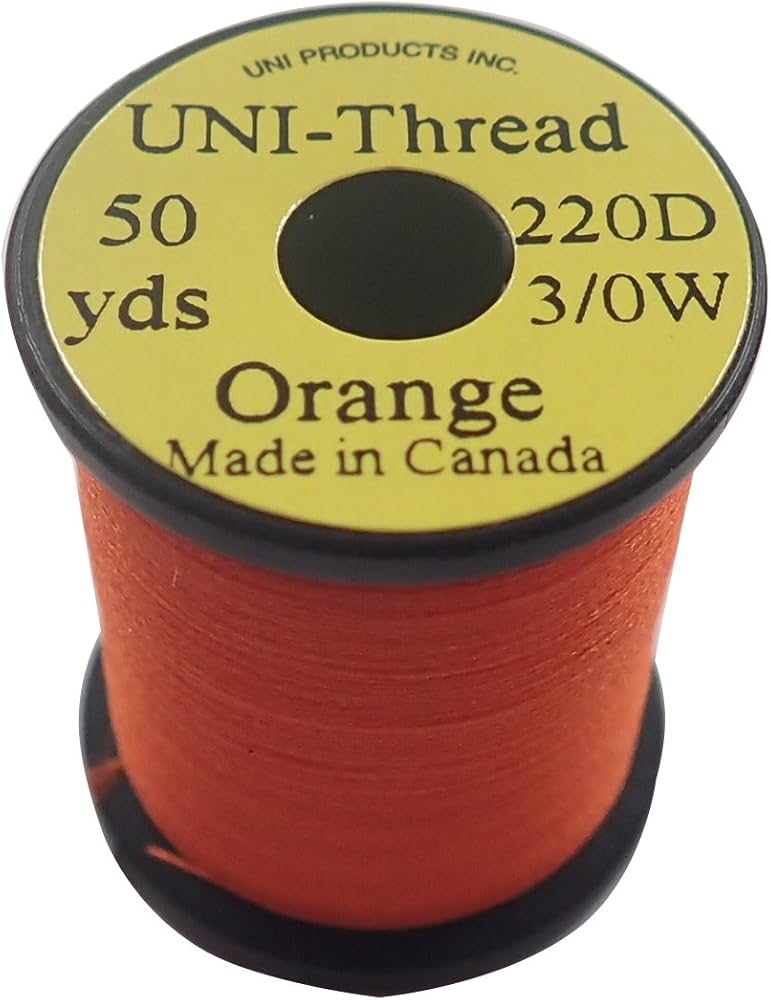

Notes: The body is treated with head cement to hold the fine layer of cream thread in place.
The wings, when tied in as explained, not only hold well but are easier to position on your fly, be they tied in for spent wings or even if tied along the side of the fly as you would when tying a Mrs Simpson.
- Hook: Mustad R50, size: 18 – 16
- Thread: Tan/Orange
- Body: Tan Micro Chenille singed to seal it
- Wing: One Badger cock hackle tip with a bunch of Elk hock fibres tied over and flared to give a delta shape.
Notes: It should be noted that if you experience such a situation requiring a fluttering termite, an orange bodied Elk Hair Caddis may just help as a second choice.
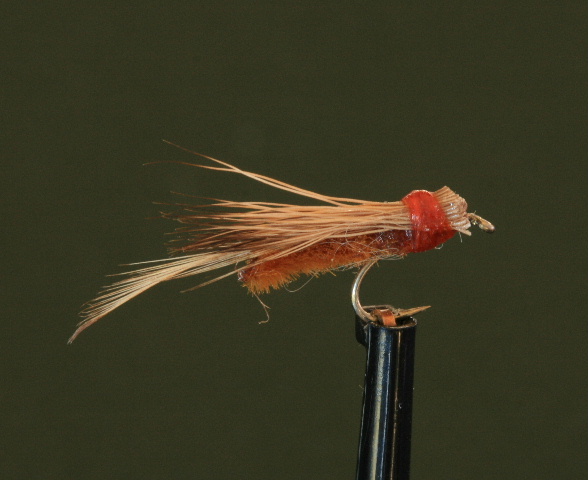
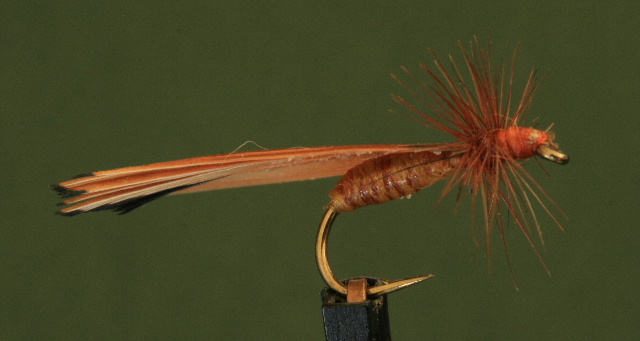
- Hook: Mustad R50, size 16
- Body: As Lowland Termite
- Wing: Brown/Black tipped back feather from a Cock Ringneck Pheasant tied in and folded back over as described in the Lowland pattern
- Hackle: Brown Whiting Farms cock saddle hackle three or four turns.
It should also be noted that termites will at times drop their wings on hitting water, so it is an idea to tie up a few wingless versions to fish just under the surface.
John O’Shaughnessy’s Termite Fly
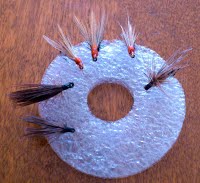
- Hook: Dry fly size 12 – 14
- Thread: brown. I’m trying red thread for the head at the moment probably due to my Irish heritage.
- Wings: light creamy cock neck hackle looks good though a darker brown such as furnace seems to work better.
- Body: dark brown antron or seals fur.The natural body colour of the insect is a light brown but again darker colours seem to stand out better.
- Legs: dark brown hackle palmered from the bend to the eye of the hook.
- Rib: very light copper wire. This helps the fly to sit flat in the surface film. If you haven’t got this don’t use it. I can’t find mine.
Blowflies
These traditional favourites, such as the Red Tag, with fat peacock hurl bodies, all have blowfly appeal!
See the FlyLife article in their e-mag #3 – True Flies

Emerging Woolly Bugger
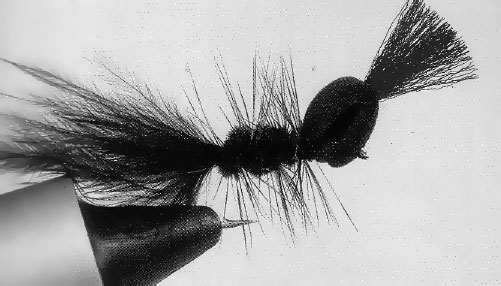
Could be good for bass in larger sizes.
Casting Tip
– Just a few slack line casts which could be handy for small flowing streams
– you can find Carl McNeil’s demos on YouTube.
Wiggle, Pile & Tuck – FlyLife Magazine, Issue 61.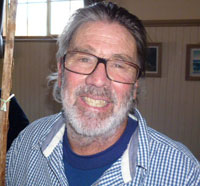
Peter Glasson
Casting Instructor, FFI
